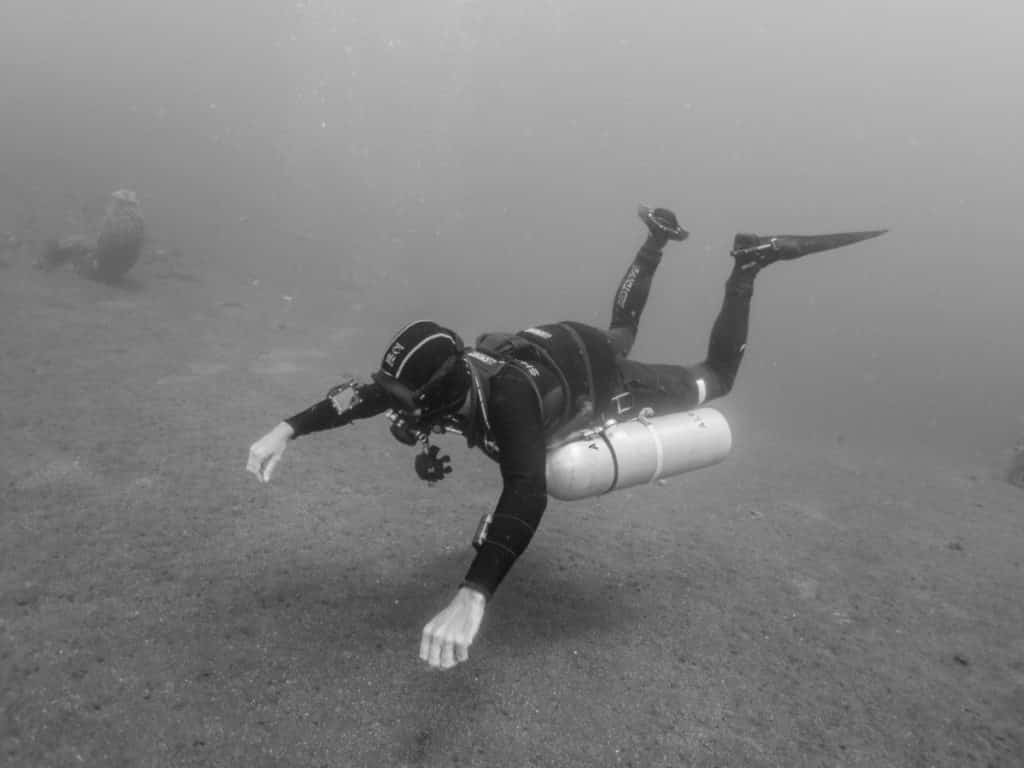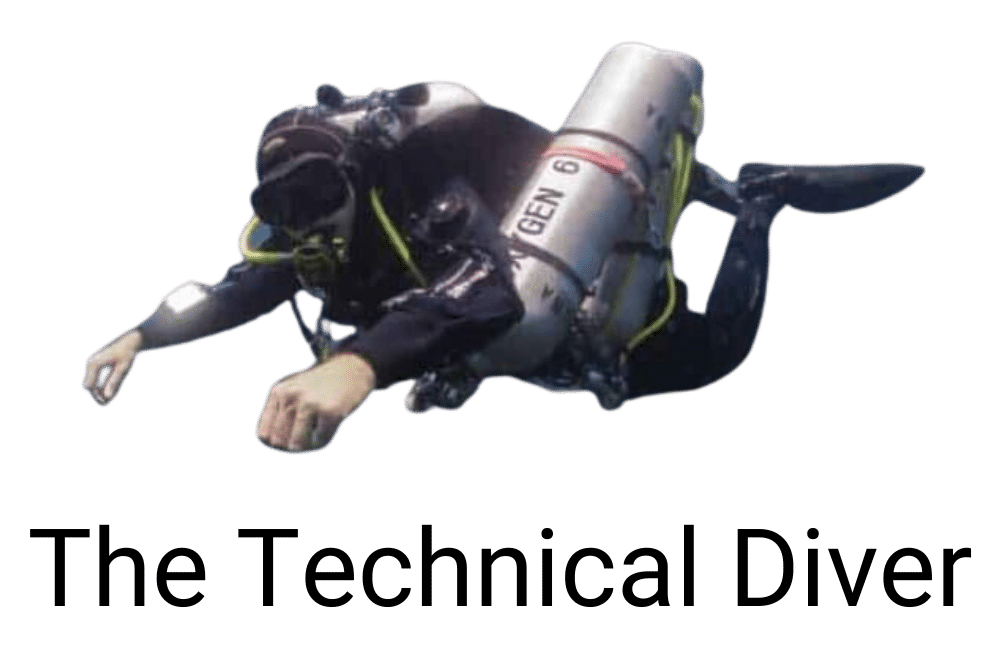Sidemount course

Sidemount course
The increased popularity of the sidemount course has really opened up technical diving to many divers who would have never previously considered it. That makes a lot of sense, ask any sidemount diver; it’s comfortable, adaptable, easy to manage, and convenient on recreational dives.
The main reason that recreational divers are increasingly adopting sidemount is because it’s a really comfortable way to dive, and you have twice the gas. That means longer dives on your favourite dive site. If you swap air for nitrox, you’ll get increased NDLs without getting low on gas before getting the benefit of them. It’s also way more suitable if you suffer from back problems, or if a twinset is bigger than you are.
Technical sidemount diving
But let’s not forget that sidemount originated with cave diving. It’s as applicable to decompression diving as diving with a twinset. You have large volumes of gas, and redundancy if something happens to one of your regulators or cylinders.
The main difference between backmount diving and sidemount diving is the ease of gas management. With sidemount, it’s much more straightforward. Your valves are tucked underneath your armpits, so if you have a sudden leak, you can simply push the valves forward, see where it’s coming from, and deal with it quickly. You can’t do that on a twinset, and reaching the valves is more challenging for newer divers, especially when wearing a drysuit.
Sidemount is also scalable; higher levels of training use the same basic configuration. So trimix diving is possible with the addition of extra cylinders below the diver (some divers place them above). This doesn’t require any change to the basic set-up learned during your initial course.
What to expect with a sidemount course
The popularity of sidemount has brought with it some pretty poor examples of training. Many scuba instructors gained the ability to teach it early on, but without learning it properly themselves. Some of the agencies allow instructors to simply pay for the certification to be able to teach it. Yes, that is as ridiculous as it sounds, but also sadly true to this day.
Training has improved in recent years, as better practices have been circulated on social media. But you still see some very strange setups appearing occasionally during a dive, mainly as a result of the diver not understanding the importance of correctly setting up the harness (they were likely never taught this vital aspect), or paying much attention to cylinder streamlining during a dive.
A standard sidemount course usually consists of 2 to 4 dives, depending on whether you do the recreational or technical course. I highly recommend preferably looking for a course that is 6 dives minimum. Failing that, ask for additional dives to be added to a course. A good instructor will be receptive to this, as they will want as much time as possible with the student in-water and on land, to ensure that all the information becomes embedded properly.
Recreational versus technical sidemount
The difference between recreational and technical sidemount is that the recreational course teaches you how to use sidemount equipment to the level of your training as a recreational diver. The technical sidemount course teaches you how to dive sidemount, and also the foundations of technical diving. Whichever route you take, it takes time to learn and embed the procedures associated with sidemount diving. I have never taught a recreational sidemount course. If I did, it would be in name only.
There is a lot to take in during a course. Setting up the harness, regulators and cylinders is an involved process. There are also procedures to learn that only apply to sidemount diving- attaching and removing the cylinders properly, getting the tanks to align with your body, and managing the gas during a dive. Things like propulsion techniques are as you would learn in the Intro to Tech course. Other skills, such as free-flowing regulators, are more distinct.
Courses should take 3 or 4 days to complete. Training can be undertaken with all major diving agencies, for example, TDI.
